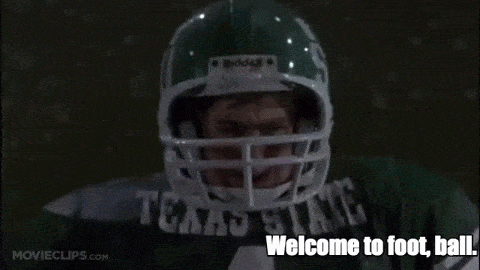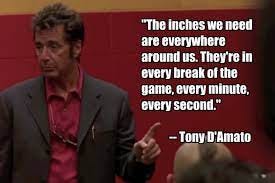Last week we talked about how eliminating the box office cost Hollywood one of its best sources of data on what kinds of movies their audience actually wants to see. This week, we’re going to discuss how the transition from box office receipts to streaming subscriptions has eliminated the incentives that have always exerted upward pressure on the quality of the movies that Hollywood makes.
Part Two: The Death of Incentives
In the NFL, player contracts often include incentives by which a player can make additional money above and beyond their guaranteed salary in the form of bonuses for a certain level of performance… a million bucks for a certain number of sacks or touchdowns, for instance. NFL teams don’t offer these kinds of incentives because football players are inherently lazy, but because human beings are complicated and respond to all kinds of incentives moment-to-moment. Just because an athlete is handsomely paid, it doesn’t mean that he won’t strive to be even more productive if doing so can make him even more money.
This is simple human nature, and to deny it is to deny the science… as Anthony Fauci might say.
There is a similar kind of incentive-structure in movie contracts. We call it the “backend.” Backends come in all shapes and sizes, from “net” to “gross” to “adjusted gross” to box office bonuses that pay out every time a movie makes a certain amount of money. But the critical element is that they are based on box office receipts, meaning actual dollar amounts collected at theaters. Most Hollywood contracts include in their backend definitions that the calculation must be based on box office results “as reported in Variety.” In other words, backend deals based on box office receipts are competely transparent and independently verifiable.
In the world of streaming there is, by definition, no box office and so backends have disappeared, replaced by “backend buyouts.” Buyouts (for now) are typically slightly more than the amount an artist would make on a modestly successful movie, but they are significantly, sometimes by orders of magnitude, less than they would make on a runaway hit. The backend buyout has effectively eliminated the upside in favor of a modest up-front guarantee. Gone are the days of “The Hangover” where the stars and director got rich by betting on themselves. These days, it’s flat up-front fees all the way down.
Why is this a problem? Because it removes a crucial incentive structure that has been a part of the Hollywood financial model for generations.
During the WGA strike I went into great detail on how witer deals are structured, especially with regard to backends and residuals, but in order to explain why it’s so hard to squeeze profits out of the streaming model, let’s engage in a short intellectual exercise.
Imagine that I am a movie goer who sees two movies a month. Every month I spend $40 split between two movies, which means that I contribute to two separate profit pools that are exclusively available to the creators of the movies I paid to see. If I see four movies a month, I contribute to four profit pools, and so on. This is a profit model that is theoretically unlimited. It can scale up forever as long as Hollywood keeps making movies people want to see.
Now imagine that I am a Netflix subscriber. Every month I pay $20 for that service. In exchange for that fee I can watch one movie, or two, or five or a hundred. Even if you could convince Netflix to give some of my $20 back to the creators in the form of backend payments, and even if you could accurately track who watched what and for exactly how long, and even if the streamers were willing to provide that information in a transparent way (they aren’t), the amount of money available has an upper limit… the total amount of money coming in from all subscribers… and it is fractional. In other words, every day the amount of money available for profit payouts would get fractionally smaller as more and more hours of content are added to the service and begin to compete with one another for our attention… attention which is itself a limited resource. There are twenty-four hours in a day and there will bever be twenty-five.
If you combine opaque viewer data that is jealously guarded by the streamers with the industry-wide fear that as the theatrical model continues to erode there will be less-and-less incentive to pay backend buyouts at all, and an overall salary picture in which the average artist is making significanly less money than they were a decade ago and you can very quickly see why the WGA decided it had to go on strike last summer. More and more content is going directly to the streamers, the financial model is failing the people who actually make the movies and everyone knows it… they feel it.
But what does any of this have to do with quality?
Well, let’s return for a moment to our theoretical NFL player. Imagine he is getting paid a flat guaranteed salary, with no additional incentives. Now imagine it’s week 15, this player’s team is out of playoff contention, and they are down three touchdowns in the fourth quarter… is it likely that our theoretical player might decide to take a few plays off?
The answer is obviously “yes.”
It’s simple human nature and it’s no different on a football field than it is on a movie set. A producer friend of mine shot his first movie for a streamer not long ago and I asked him how the experience was different. He said “it’s hard to motivate people to go the extra mile when everyone has already been paid.” And as you scroll across your favorite streamer’s homepage looking for something, anything to watch, the results are plain to see.
The bottom line is that if you spend any time talking to people in Hollywood, you’ll learn that for the most part, the creatives, producers and the men and women who represent them would rather not sell their movies directly to the streamers. They know what such a sale means. It means no backend and no real upside in success. It means they’ll likely get no real marketing push, no flashy premeire party and no big exciting Friday night movie release. It means that their movie will quickly get lost amidst the cultural noise, just another thumbnail on an already overcrowded homepage, sandwiched in between yet another documentary on Laci Petersen and re-runs of “Suits.”
None of this incentivizes people to do their best work, none of it is good for the creative process, and so movie quality suffers.
But hey, in the end everyone has bills to pay, the traditional movie studios don’t know what to buy, much less what they should make, and the streamers are the only players still at the table.
Welcome to a Hollywood where all the incentives have been removed.
Next week… Part 3: The Death of Hype
If you enjoyed this essay and would like to support the work we do here at The Continental Congress, please consider subscribing. You can also pre-order Michael Walsh’s upcoming collection of essays “Against the Corporate Media” to which George contributed an essay on the weaponization of movie reviews, and which ships in two weeks. Thank you, so much, for your time and your patronage!







Sounds like Hollywood is getting the equity they have preached for and wanted for so long.
Your Excellency has described basic economics. Understanding economics is understanding human action. The more moral and freer the transaction the more predictable the outcome. And everyone wins. Yay.